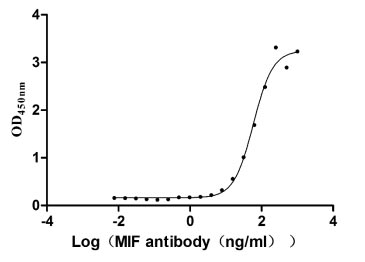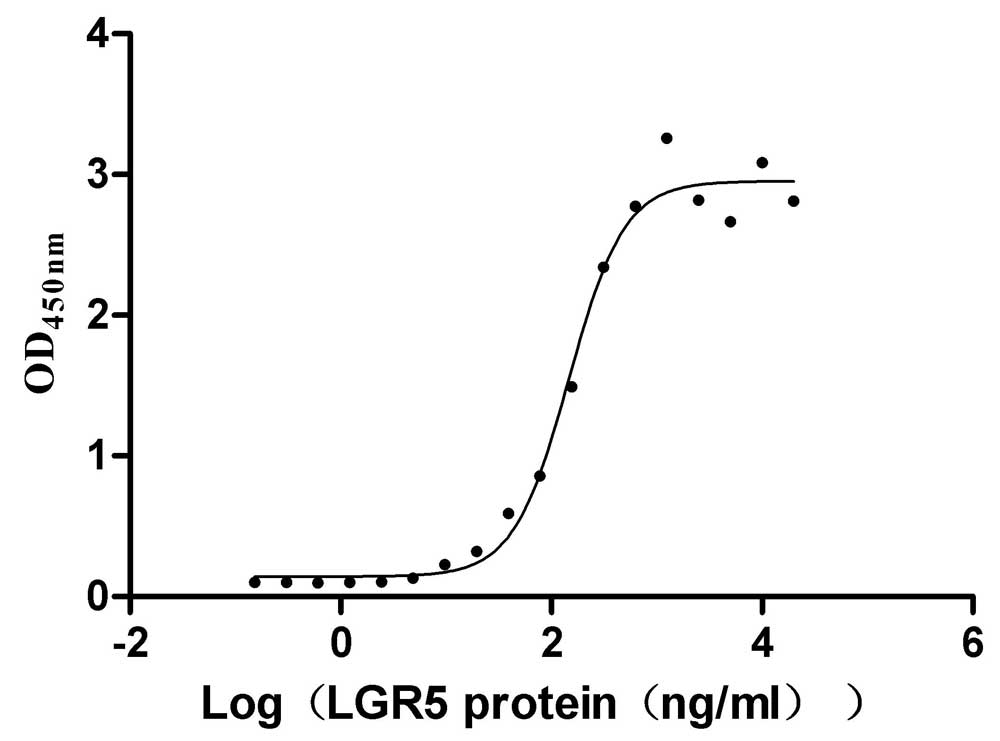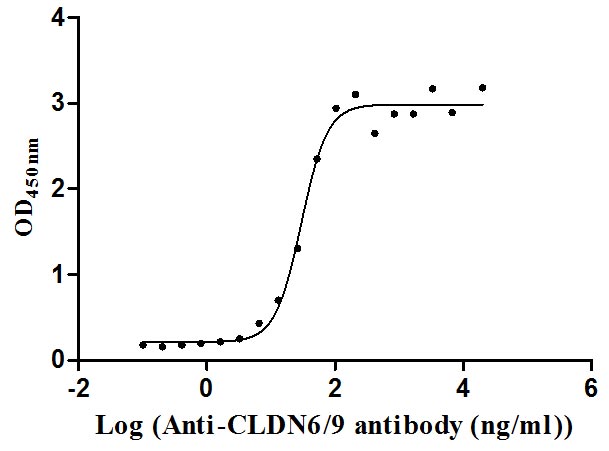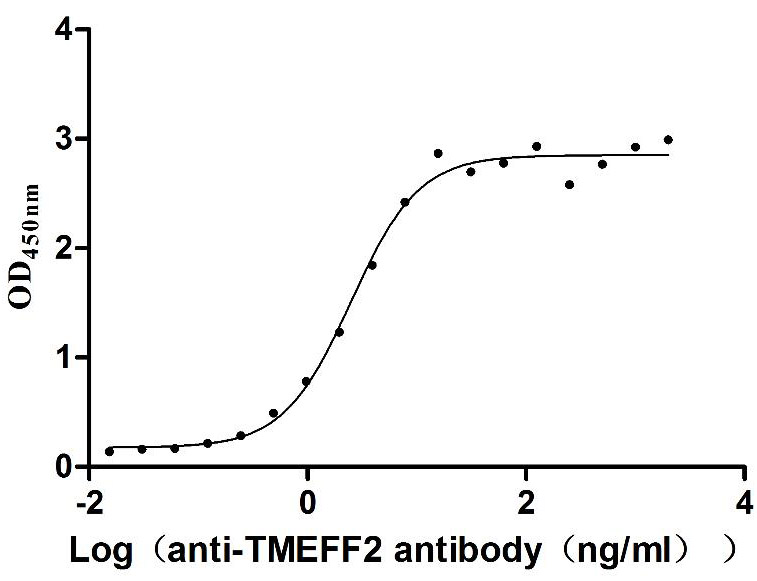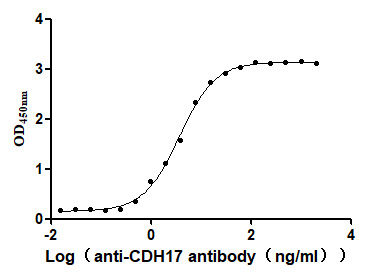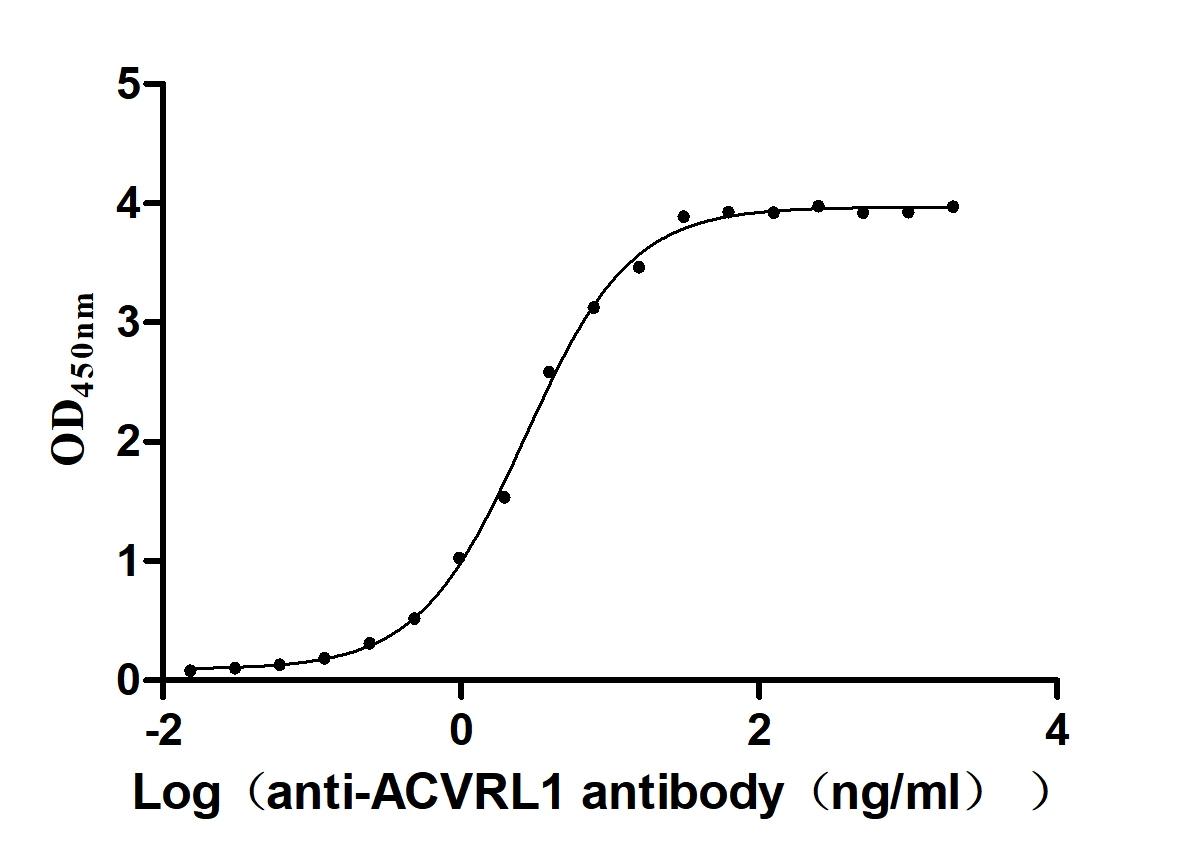Recombinant Bovine Heat shock 70 kDa protein 1A (HSPA1A), partial
-
中文名稱:牛HSPA1A重組蛋白
-
貨號:CSB-YP638905BO
-
規(guī)格:
-
來源:Yeast
-
其他:
-
中文名稱:牛HSPA1A重組蛋白
-
貨號:CSB-EP638905BO
-
規(guī)格:
-
來源:E.coli
-
其他:
-
中文名稱:牛HSPA1A重組蛋白
-
貨號:CSB-EP638905BO-B
-
規(guī)格:
-
來源:E.coli
-
共軛:Avi-tag Biotinylated
E. coli biotin ligase (BirA) is highly specific in covalently attaching biotin to the 15 amino acid AviTag peptide. This recombinant protein was biotinylated in vivo by AviTag-BirA technology, which method is BriA catalyzes amide linkage between the biotin and the specific lysine of the AviTag.
-
其他:
-
中文名稱:牛HSPA1A重組蛋白
-
貨號:CSB-BP638905BO
-
規(guī)格:
-
來源:Baculovirus
-
其他:
-
中文名稱:牛HSPA1A重組蛋白
-
貨號:CSB-MP638905BO
-
規(guī)格:
-
來源:Mammalian cell
-
其他:
產品詳情
-
純度:>85% (SDS-PAGE)
-
基因名:HSPA1A
-
Uniprot No.:
-
別名:HSPA1A; HSP70-1; Heat shock 70 kDa protein 1A; Heat shock 70 kDa protein 1; HSP70.1
-
種屬:Bos taurus (Bovine)
-
蛋白長度:Partial
-
蛋白標簽:Tag?type?will?be?determined?during?the?manufacturing?process.
The tag type will be determined during production process. If you have specified tag type, please tell us and we will develop the specified tag preferentially. -
產品提供形式:Lyophilized powder
Note: We will preferentially ship the format that we have in stock, however, if you have any special requirement for the format, please remark your requirement when placing the order, we will prepare according to your demand. -
復溶:We recommend that this vial be briefly centrifuged prior to opening to bring the contents to the bottom. Please reconstitute protein in deionized sterile water to a concentration of 0.1-1.0 mg/mL.We recommend to add 5-50% of glycerol (final concentration) and aliquot for long-term storage at -20℃/-80℃. Our default final concentration of glycerol is 50%. Customers could use it as reference.
-
儲存條件:Store at -20°C/-80°C upon receipt, aliquoting is necessary for mutiple use. Avoid repeated freeze-thaw cycles.
-
保質期:The shelf life is related to many factors, storage state, buffer ingredients, storage temperature and the stability of the protein itself.
Generally, the shelf life of liquid form is 6 months at -20°C/-80°C. The shelf life of lyophilized form is 12 months at -20°C/-80°C. -
貨期:Delivery time may differ from different purchasing way or location, please kindly consult your local distributors for specific delivery time.Note: All of our proteins are default shipped with normal blue ice packs, if you request to ship with dry ice, please communicate with us in advance and extra fees will be charged.
-
注意事項:Repeated freezing and thawing is not recommended. Store working aliquots at 4°C for up to one week.
-
Datasheet :Please contact us to get it.
靶點詳情
-
功能:Molecular chaperone implicated in a wide variety of cellular processes, including protection of the proteome from stress, folding and transport of newly synthesized polypeptides, activation of proteolysis of misfolded proteins and the formation and dissociation of protein complexes. Plays a pivotal role in the protein quality control system, ensuring the correct folding of proteins, the re-folding of misfolded proteins and controlling the targeting of proteins for subsequent degradation. This is achieved through cycles of ATP binding, ATP hydrolysis and ADP release, mediated by co-chaperones. The co-chaperones have been shown to not only regulate different steps of the ATPase cycle, but they also have an individual specificity such that one co-chaperone may promote folding of a substrate while another may promote degradation. The affinity for polypeptides is regulated by its nucleotide bound state. In the ATP-bound form, it has a low affinity for substrate proteins. However, upon hydrolysis of the ATP to ADP, it undergoes a conformational change that increases its affinity for substrate proteins. It goes through repeated cycles of ATP hydrolysis and nucleotide exchange, which permits cycles of substrate binding and release. The co-chaperones are of three types: J-domain co-chaperones such as HSP40s (stimulate ATPase hydrolysis by HSP70), the nucleotide exchange factors (NEF) such as BAG1/2/3 (facilitate conversion of HSP70 from the ADP-bound to the ATP-bound state thereby promoting substrate release), and the TPR domain chaperones such as HOPX and STUB1. Maintains protein homeostasis during cellular stress through two opposing mechanisms: protein refolding and degradation. Its acetylation/deacetylation state determines whether it functions in protein refolding or protein degradation by controlling the competitive binding of co-chaperones HOPX and STUB1. During the early stress response, the acetylated form binds to HOPX which assists in chaperone-mediated protein refolding, thereafter, it is deacetylated and binds to ubiquitin ligase STUB1 that promotes ubiquitin-mediated protein degradation. Regulates centrosome integrity during mitosis, and is required for the maintenance of a functional mitotic centrosome that supports the assembly of a bipolar mitotic spindle. Enhances STUB1-mediated SMAD3 ubiquitination and degradation and facilitates STUB1-mediated inhibition of TGF-beta signaling. Essential for STUB1-mediated ubiquitination and degradation of FOXP3 in regulatory T-cells (Treg) during inflammation. Negatively regulates heat shock-induced HSF1 transcriptional activity during the attenuation and recovery phase period of the heat shock response.
-
基因功能參考文獻:
- In vitro acute heat stress and Geranylgeranylacetone induction increased the level of Hsp70 which upregulated the expression of TLR2/4 and NOD1/2 in both the cell cultured models. However, the expression level of TLR4 was found to be highest followed by NOD2, TLR2 and NOD1. PMID: 30196903
- protects glutamatergic synaptic transmission in olfactory cortex cells, against acute anoxia PMID: 15088393
- A new SNP in the 3'-UTR of the hsp 70-1 gene in Bos taurus and Bos indicus PMID: 16382367
- The purified 44-kD ATPase domain from HSP70 exhibited intrinsic ATP-ADP exchange activity and acid-stable autophosphorylation at Thr204. PMID: 17140383
- The effect of culture conditions on expression of heat shock protein 70 and Bax protein in bovine blastocysts is reported. PMID: 18962879
- that HSC70 preconditioning (1) attenuates the TNF-alpha response to endotoxin in macrophages in vitro, (2) induces cardiac functional tolerance to endotoxin and (3) reduces NF-kappaB activity, and TNF-alpha and ICAM-1 levels in heart tissue. PMID: 20478717
- the presence of SNPs (C/- and G/T) in the 5'-UTR region of inducible Hsp70.1 ameliorates HS response and tolerance to heat of bovine peripheral blood mononuclear cells PMID: 21274669
- This study showed that Hsp70 concentration is a reliable indicator of chronic stress but is not a reliable indicator of a single stressor when animals are exposed to multiple chronic stressors. PMID: 23048154
- Five novel SNPs located in the 3' flanking region of the inducible bovine HSP70A1A gene were identified in a Chinese Holstein population. PMID: 23543596
- Heat shock increased both HSP70 and IFNT expression in blastocysts. PMID: 23638875
- the promoter region of bovine hsp70.1 gene is polymorphic and may be useful in selection of dairy cows for relatively better thermotolerance and higher milk production. PMID: 24055724
- More DNMT1 mRNA was detected in the transgenic somatic cell nuclear transfer (SCNT) group than the other three groups. Hsp 70.1 mRNA was detected in the in vitro fertilzation embryos. Mash2 mRNA was present at highest levels in transgenic SCNT embryos. PMID: 24675837
- In Sahiwal cattle the mRNA expression of HSP70 and its protein concentration were higher (P<0.05) during peak summer (44 degrees C) and winter (10 degrees C) as compared to Frieswal cattle. This investigation supports the earlier information on the higher adaptability of indigenous cattle breeds to hot and humid conditions compared to the crossbreds of temperate cattle breeds. PMID: 27264883
- Inhibition of Hsp70 by using the Hsp70 inhibitor KNK437 or knock down Hsp70 using siRNA exaggerated and overexpression of Hsp70 prevented the second phase disruption of lung endothelial integrity. PMID: 26066050
- Prostaglandin E synthase interacts with inducible heat shock protein 70 after heat stress in bovine primary dermal fibroblast cells. PMID: 25412999
- Hsp70-1A is a biomarker of low beef tenderness across the cattle breeds. [HSP70-1a] PMID: 25175407
- It is suggested that 9 SNPs increase the susceptibility to mastitis due to their low polymorphisms and can be used as molecular markers to breed the dairy cows resistant to mastitis. PMID: 25592821
顯示更多
收起更多
-
亞細胞定位:Cytoplasm. Nucleus. Cytoplasm, cytoskeleton, microtubule organizing center, centrosome.
-
蛋白家族:Heat shock protein 70 family
-
數(shù)據庫鏈接:
Most popular with customers
-
Recombinant Human Macrophage migration inhibitory factor (MIF) (Active)
Express system: Mammalian cell
Species: Homo sapiens (Human)
-
Recombinant Human R-spondin-1 (RSPO1), partial (Active)
Express system: Mammalian cell
Species: Homo sapiens (Human)
-
Recombinant Human Claudin-9 (CLDN9)-VLPs (Active)
Express system: Mammalian cell
Species: Homo sapiens (Human)
-
Recombinant Human Tomoregulin-2 (TMEFF2), partial (Active)
Express system: Mammalian cell
Species: Homo sapiens (Human)
-
Recombinant Human C-type lectin domain family 4 member C (CLEC4C), partial (Active)
Express system: Mammalian cell
Species: Homo sapiens (Human)
-
Recombinant Human Cadherin-17 (CDH17), partial (Active)
Express system: Mammalian cell
Species: Homo sapiens (Human)
-
Recombinant Human Serine/threonine-protein kinase receptor R3 (ACVRL1), partial (Active)
Express system: Baculovirus
Species: Homo sapiens (Human)
-
Express system: Mammalian cell
Species: Homo sapiens (Human)


